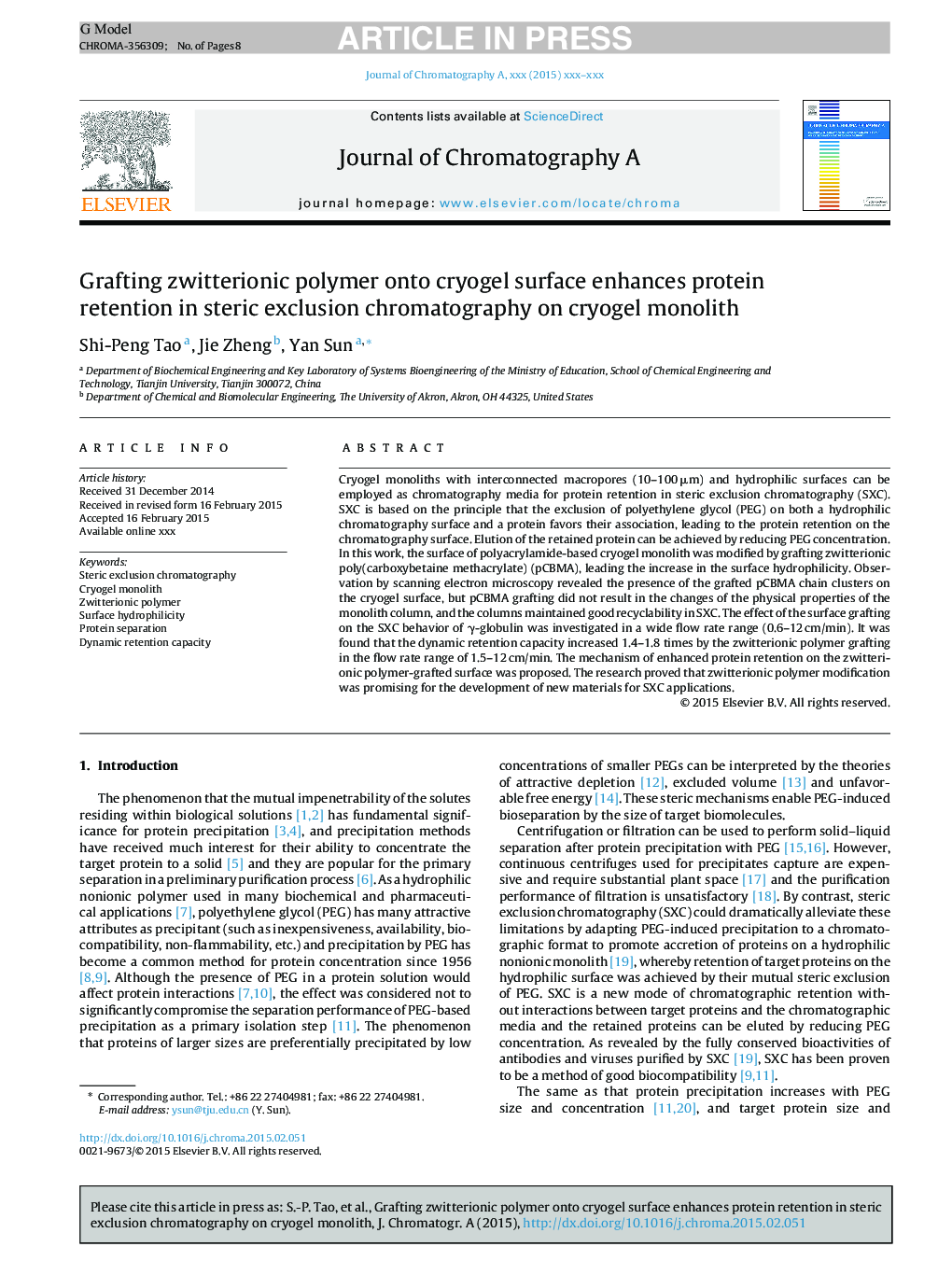| Article ID | Journal | Published Year | Pages | File Type |
|---|---|---|---|---|
| 7611895 | Journal of Chromatography A | 2015 | 8 Pages |
Abstract
Cryogel monoliths with interconnected macropores (10-100 μm) and hydrophilic surfaces can be employed as chromatography media for protein retention in steric exclusion chromatography (SXC). SXC is based on the principle that the exclusion of polyethylene glycol (PEG) on both a hydrophilic chromatography surface and a protein favors their association, leading to the protein retention on the chromatography surface. Elution of the retained protein can be achieved by reducing PEG concentration. In this work, the surface of polyacrylamide-based cryogel monolith was modified by grafting zwitterionic poly(carboxybetaine methacrylate) (pCBMA), leading the increase in the surface hydrophilicity. Observation by scanning electron microscopy revealed the presence of the grafted pCBMA chain clusters on the cryogel surface, but pCBMA grafting did not result in the changes of the physical properties of the monolith column, and the columns maintained good recyclability in SXC. The effect of the surface grafting on the SXC behavior of γ-globulin was investigated in a wide flow rate range (0.6-12 cm/min). It was found that the dynamic retention capacity increased 1.4-1.8 times by the zwitterionic polymer grafting in the flow rate range of 1.5-12 cm/min. The mechanism of enhanced protein retention on the zwitterionic polymer-grafted surface was proposed. The research proved that zwitterionic polymer modification was promising for the development of new materials for SXC applications.
Keywords
Related Topics
Physical Sciences and Engineering
Chemistry
Analytical Chemistry
Authors
Shi-Peng Tao, Jie Zheng, Yan Sun,
